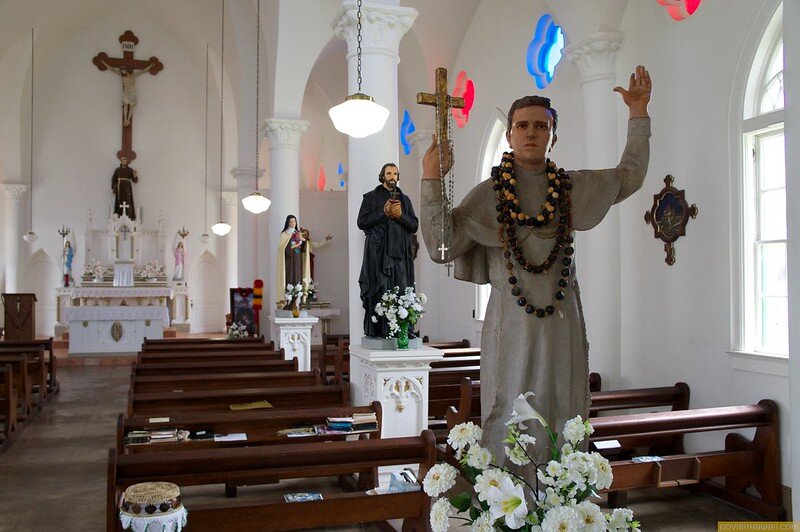
Father Damien de Veuster was a priest who unselfishly served in Hawaii in the 1800’s. He was born in Belgium but came to Hawaii as a missionary in his 20’s. Probably his most noted effort was serving the people with Hanson’s Disease on the Hawaiian Island of Molokai.
You may not recognize the term Hansen’s Disease, but I’m sure you’ve heard of it. It is also known as leprosy, but the proper term is Hansen’s Disease.
In the mid 1800’s the first case of Hansen’s Disease was documented in Hawaii and it began to spread rapidly. In an effort to try to control the disease, victims were isolated to the Kalaupapa peninsula on Molokai. This peninsula is surrounded by the Pacific Ocean and tall vertical cliffs. (To see a photo of the peninsula click here. To see a photo of the cliffs behind the settlement click here.)
VisitMolokai.com describes what the first Hansen’s Disease victims had to endure. The conditions were shocking to say the least.
In early 1866, the first leprosy victims were shipped to Kalaupapa and existed for 7 years before Father Damien arrived.
The area was void of all amenities. No buildings, shelters nor potable water were available. These first arrivals dwelled in rock enclosures, caves, and in the most rudimentary shacks, built of sticks and dried leaves.
Folklore and oral histories recall some of the horrors: the leprosy victims, arriving by ship, were sometimes told to jump overboard and swim for their lives. Occasionally a strong rope was run from the anchored ship to the shore, and they pulled themselves painfully through the high, salty waves, with legs and feet dangling below like bait on a fishing line.
The ship’s crew would then throw into the water whatever supplies had been sent, relying on currents to carry them ashore or the exiles swimming to retrieve them.
Father Damien moved to Kalaupapa in 1873 at age 33. He tirelessly ministered to the physical and spiritual needs of the Hansen’s Disease residents. He built homes and churches. He arranged for medical services. He actually contracted Hansen’s disease and died at the age of 49 in Kalaupapa.
Fortunately a drug was developed for Hansen’s Disease in the 1940’s. The drug puts the disease in remission and prevents the patients from being contagious.
Kalaupapa continues to be fairly isolated. Even to this day, the only way to get to Kalaupapa is by boat, plane, or by a long hike or mule ride. There is no access by automobile. Kalaupapa has less than 30 former patients that remain on the peninsula according Honolulu’s Star Bulletin in 2008. The patients are free to relocate, but they choose to stay put. They receive a lifetime subsidy as long as they live there.
Kalaupapa is now a national historical park. Their website has quite bit of useful information for planning a visit. You must be age 16 or older to visit Kalaupapa. If your time on Molokai is short, you can see the Kalaupapa peninsula from an overlook at Palaau State Park off Kalae Highway.







2 comments
Wonderful article. We’ve visited the overlook many times but never taken the trip down to the settlement.
David
Thanks, David.